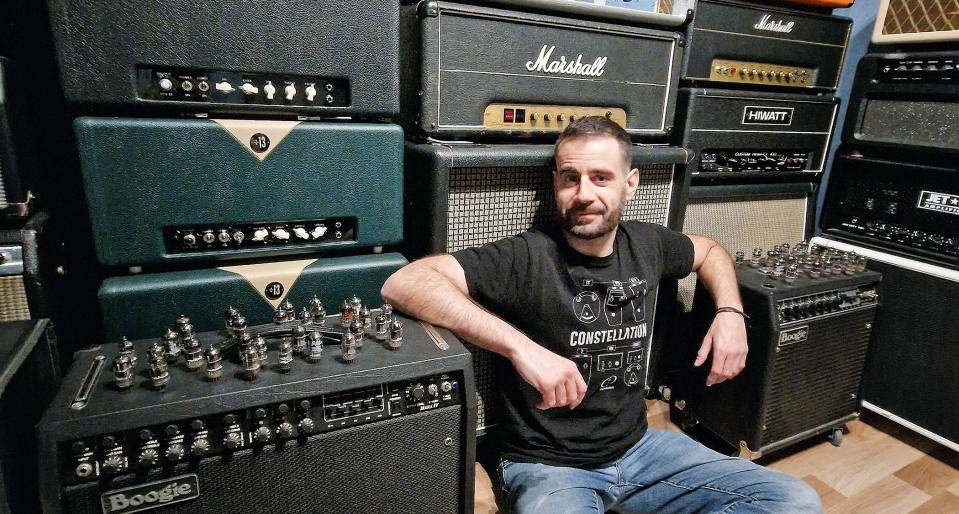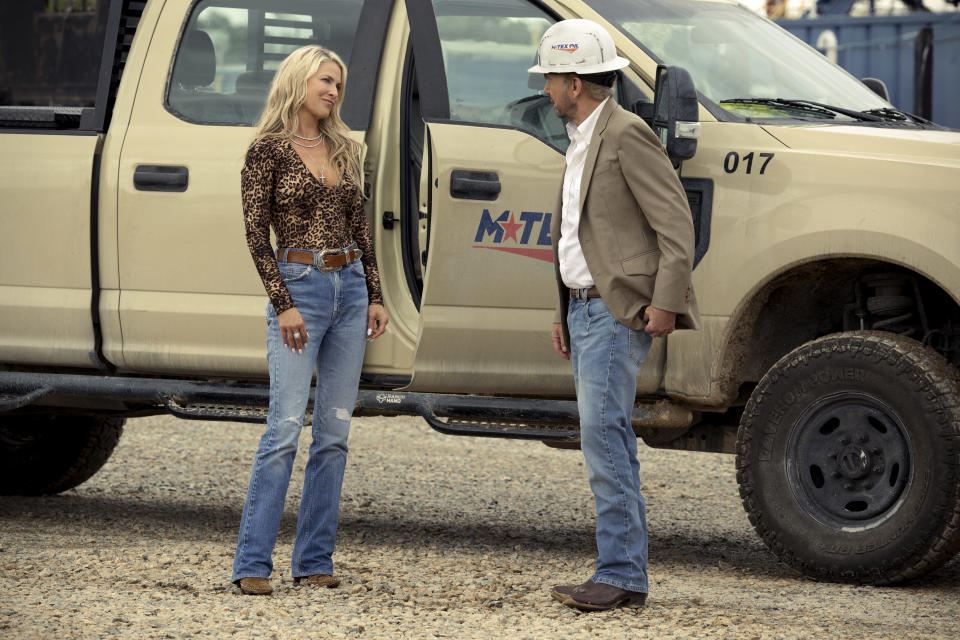When you buy through links on our articles, Future and its syndication partners may earn a commission.

Credit: Crazy Tube Circuits
Greece is, perhaps, not the very first country that comes to mind when you think of premier-grade effects. But some of the best pedals in the world right now are coming out of the Mediterranean country, not least from the workshops of Athens-based pedal maker Crazy Tube Circuits, whose whole design philosophy grew out of a love for vintage and classic valve amps.
Despite this emphasis on tradition, CTC pedals stand out for their imaginative pairings of sought-after vintage sounds and clever methods to enhance the feature set of their multi-functional pedals.
Advertisement
Advertisement
We catch up with the man behind the madness, Christos Ntaifotis, to get his take on making effects that are at once classic yet just a little different.

Crazy Tube Circuits TI:ME delay pedal
How did you get started in making effects – and how does the ‘tube circuits’ bit come in, as many of your pedals don’t feature valves?
“Okay, so, first of all I had a passion for New Old Stock tubes. I mean, I would try to source 12AX7s everywhere that I could in the local Greek market from the 60s, 70s, and early 80s.
“I would try to find all the hardware stores or the service stores that would do all the radio repairs and ask them, ‘Do you have any tubes left?’ And I had some friends make fun of this – they would call me the ‘Crazy Tube Guy,’ although in Greek. And besides that, I also collect tube amps.
Advertisement
Advertisement
“So although most of the pedals don’t actually contain tubes, except for one – the Space Charged Overdrive – the whole idea is to make pedals that sound close to the real thing, to real tube amps, with the warmth that you would expect.”

Crazy Tube Circuits Unobtanium and Hi Power on a Pedalboard
What was the first pedal you put out as Crazy Tube Circuits?
“The first was the Black Magic, which was actually called Dr Boogie originally. As you can guess, it was based on a Mesa/Boogie Dual Rectifier, and actually the schematic of that first version is going around on the do-it-yourself forums. And then I changed the name to Black Magic – it was a JFET emulation of that amp.”
What are the biggest challenges you face when you set out to design an effects pedal that sounds like a specific classic valve amp?
“Well, there are so many aspects because when we have an amp sound in mind [to emulate] we actually look at the whole amp: the internal circuits, the tubes, the transformers… You also have to listen to the cabinets, the speakers. So there are so many variables in that equation.
Advertisement
Advertisement
“The difficult thing is to make a pedal that would give the essence of that sound [when used] with any amp. The aim is to be able to use that pedal to make any relatively flat-sounding amp sound as close as possible to a ‘Plexi’ or a Dual Rectifier or a Deluxe or whatever the pedal is trying to replicate.”
Your Unobtanium pedal has been one of your most popular effects to date. It features both Klon-style and Dumble-voiced drive circuits in a single pedal. What inspired you to combine those two sounds in one box?
“As I said, I consider myself not so much a player as a gear collector, so my GAS is pretty high and I also have some friends that also collect things. I got a chance to reference an original Klon [Centaur] pedal, and I thought I could make a clone of that and get as close as possible.
“To be honest, I never had an actual Dumble amp to try out, but I had the chance to try many good [high-end replicas] of that. So the idea behind the Unobtanium pedal is the sounds that you cannot easily obtain because it’s too pricey or too rare to find a Klon or Dumble.”
How do the two sides of the pedal interact with each other when in use?
“I mean, without stooping down to change that toggle switch for the voicing, you have one sound [on the Klon side] and two voicings on the Dumble side that you can easily control with an external footswitch as well.
Advertisement
Advertisement
“So we have three sounds that way, and if you also combine them, you’ve got plenty more. They work really, really great. You can have, for example, the Klon ‘always on’ for a clean sound – and then add a lead tone with the Dumble side.”
The Klon Centaur has been the subject of so much sonic folklore, yet how hard can it really be to emulate an overdrive circuit that’s been well understood for a while now? What’s the secret to getting it really right?
With the TI:ME pedal I wanted to [emulate] the very, very early digital delays that were of the mid-70s, the very first rack delay units. The technology was not so advanced then, so they were not purely clean
“Okay, so the main circuit is nothing too fancy. I say that because we have known the Klon circuit for more than a decade. The difficult part is to find diodes [for] the clipping section, and hand-match them so they’re going to be at the same threshold as the original units. So the original units used the 1N34A germanium diodes that had a very specific spec.
“For example, if you just buy them from the factory, they would go from 0.25 up to one volt of forward voltage drop. So you have to hand-test them and find the diodes with approximately 0.3 volt voltage drop – because this is what the actual unit had.
Advertisement
Advertisement
“It’s important to do this matching process. Otherwise, if you had two pedals [built identically except with different diode values] you would have very different clipping sounds and compression. For example, one of them would need the volume set around nine o’clock to get a certain sound, while the other would have to be set at one o’clock to achieve the same sound.”
This writer is a big fan of your TI:ME delay pedal. Not only because it sounds good but because you seem to have squeezed all the features you need and none you don’t into a very compact pedal – tap tempo, modulation, delay note values, and waves of self-oscillation triggered by a momentary footswitch…
“Thank you so much for your kind words – it really means a lot, to be honest, because I know there are so many delays out there that are strictly pure, clean digital delays or analog or tape echo delays.
“But with the TI:ME pedal I wanted to [emulate] the very, very early digital delays that were of the mid-70s, the very first rack delay units. The technology was not so advanced then, so they were not purely clean. So I wanted to go for a delay that sounded a bit lo-fi and have modulation, but with a tone knob also, so it will be musical whatever the setting would be.
Advertisement
Advertisement
“I also wanted to make a delay that you could use on your rhythmic pattern or on your solos and also a delay that would be great for players who experiment a bit more on stage. So I also added the feedback control on the tap tempo so when you press it down you get those self‑oscillation sounds that we all love on our delays. So, yeah, that’s it. I wanted to make a musical delay that stood out for not being a BDD-style analog delay or purely clean, either.”
Speaking of analog sounds, your White Whale pedal uses genuine spring reverb and adds all-analog tremolo. How did you make that work in a relatively small box?
“This is the second version of that pedal – the first came out in 2017. I wanted to see if it was possible to have a spring reverb and analog tremolo in one box. I was inspired by another great pedal [Strymon Flint, we assume – Ed], but it is digital, so I wanted to make a pure analog version of that in the smallest size possible; and this is how the first version came about.
For the new White Whale, I tried to upgrade the reverb section with a tube power amp driving the springs, so you got more headroom on the reverb section
“For the new version, I tried to upgrade the reverb section with a tube power amp driving the springs, so you got more headroom on the reverb section, plus you have a harmonic tremolo [mode] on the tremolo side now, too. You also get the added bonus of having the two effect sides purely independent, so you can place the tremolo side before the reverb, or vice versa.
Advertisement
Advertisement
“That is useful because, for example, when you get on the optical tremolo and tube-bias tremolo, you would probably prefer to have those after your reverb, and if you have harmonic tremolo, you would probably prefer to have that before your reverb effect. So I thought I would have to add these options in order to have a more complete package of a reverb and tremolo effect in a single box.”

Crazy Tube Circuits White Whale V2
How did you get spring reverb to sound warm, full, and expansive with the shorter springs required by putting it in a pedal?
“I found a reverb tank that would [compensate] somewhat for the size and the length of the spring, and would sound kind of fuller. I mean, it’s physics – the longer the spring, the fuller the reverb will sound.
“But if you add some springs, that will also make the reverb sound fuller, and there are other tricks you can use. Like I said, we used a valve power amp to drive the springs harder but in a cleaner way, without distorting, and this is also a way to get a fuller sound from a smaller spring reverb tank.”

Crazy Tube Circuits Unobtanium
When we caught up with American sideman and YouTube star Pete Thorn last year, he said your Starlight fuzz/distortion pedal was a mainstay of his live rig with The Classic Rock Show. Some fuzz pedals can be quite niche, but we got the impression he found it pretty versatile.
“The Starlight actually is one of the earliest Crazy Tube Circuits designs, and it’s primarily based on the very first design that we discussed earlier – the Dr Boogie that became the Black Magic. So it’s kind of voiced after the [Mesa/Boogie] Dual Rectifier but with a more vintage kind of vibe. It starts as an overdrive, then [as you turn up the gain] goes into distortion territory, and then all the way up into fuzz.
Advertisement
Advertisement
“I mean, I took what the Black Magic did and added some MOSFET clipping so the low mids and lower frequencies would compress and sag a bit more so you have a fuzzier sound. So it began with a modern sound, but I tried to enhance it, especially in the lower-mid frequencies, to get the vintage vibe that sounds great – especially on lead sounds.”
Do you do a more traditional pure fuzz pedal as well?
“Yeah, it’s called the Constellation. It’s based on traditional fuzz pedals. For example, you have a Fuzz Face[-style circuit]; Vox Tone Bender; Tone Bender 1.5; Tone Bender II; Rangemaster, and a Rangemaster into a Fuzz Face. So it’s all analog, and I’ve used the switching circuit to move between them.
“Because if you look at the respective circuits of those [classic fuzz pedals], they’re actually really close. For example, the Fuzz Face, Vox Tone Bender, and Tone Bender I are all based on the same principle. You only change some capacitor values or resistor values, and you get a new pedal.”
A lot of your designs have taken classic sounds as a starting point, and you’ve made really interesting choices. What do you think is promising for the future? What sort of areas do you think you’d like to start moving into?
“To be honest, I still want to explore more amp-in-a-box designs and maybe dual overdrive. This is something that I really like working on and spending time on. Like I said, I do collect lots of amps and I would say it’s better than getting into drugs or something illegal or something like that. It’s a passion!”
-
For more details, head over to Crazy Tube Circuits.
EMEA Tribune is not involved in this news article, it is taken from our partners and or from the News Agencies. Copyright and Credit go to the News Agencies, email news@emeatribune.com Follow our WhatsApp verified Channel





